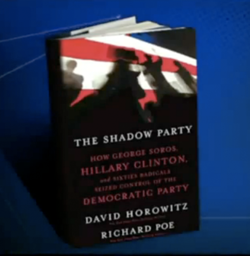Just Say No to Purple Five-Dollar Bills
|
by Richard Poe Wednesday, April 2, 2008 9:36 pm Eastern Time |
Archives 9 Comments |
HAVE YOU seen the new five-dollar bill? It looks like someone spilled grape juice on it. A violet stain obscures Abraham Lincoln’s face. On the back, an oversized numeral five appears in purple. Enough is enough. We must stop the desecration of our currency.
The U.S. Treasury’s Bureau of Engraving and Printing claims it is making our banknotes “safer, smarter and more secure“. They say the violet stain on Lincoln’s face adds “complexity”, rendering counterfeiting more difficult. The big purple five on the back supposedly helps vision-impaired people count their change.
Hogwash! These goals could be achieved through less drastic means. There is no need to turn our banknotes into Monopoly money.
U.S. currency already features watermarks, microprinting, embedded fluorescent security threads, color-shifting ink and fine-line printing patterns — subtle security measures requiring little change in the dollar’s design. For the visually impaired, high-contrast features could be added in a tasteful manner, without resorting to garish, phosphorescent hues.
The fact is, we are being hoodwinked. The redesign of our currency has nothing to do with fighting counterfeiters or helping people with weak eyesight. It has everything to do with catering to the perverse canons of postmodernist art. The U.S. Treasury has allowed a cabal of avant-garde designers to pull off one of the most audacious practical jokes in art history; the “subversion” and “deconstruction” of the U.S. dollar. We the taxpayers must demand an end to this cultural vandalism.
More than 2,300 years ago, Aristotle opined that art should be wondrous and beautiful. It should instruct and elevate the masses, he said, giving pleasure and catharsis or emotional release.
Today’s hipster intellectuals reject Aristotle. Instead, they embrace a philosophy variously called “poststructuralism“, “postmodernism” or just plain PoMo. For PoMo’s apostles, art is a weapon of revolution. Its purpose is to mock, degrade and undermine the cherished beliefs of Western civilization. PoMo theorists call this process “deconstruction” or “subversion“.
Photographer Andres Serrano famously deconstructed Christianity in 1989 by snapping a picture of a crucifix submerged in Serrano’s own urine. In 1999, the Brooklyn Museum showcased an image of the Virgin Mary which artist Chris Ofili had splattered with elephant dung.
Meanwhile PoMo designers have been doing to national currencies what Serrano and Ofili did to Christianity. Their first target was the Dutch guilder.
From 1964 to 1985, graphic artist Ootje Oxenaar redesigned the entire series of Dutch guilder notes on commission from the Nederlandsche Bank. Oxenaar began the project by studying banknotes from many countries. He found them all “very muddy in color“. Oxenaar later told the PBS series Nova:
“The only banknotes that really inspired me, in fact, was play money, like the Monopoly money, and that is what I think is necessary for banknotes too.”
Accordingly, Oxenaar designed the new guilders to look like play money. He sprang other tricks on the Dutch taxpayer as well. Oxenaar told a British design magazine:
“On the 1000 guilder note, it became a sport for me to put things in the notes that nobody wanted there. I was very proud to have my fingerprint in this note – and it’s my middle finger!”
The 100-guilder note formerly portrayed Admiral Michiel de Ruyter, a Dutch national hero who defeated French and British fleets in the 17th century. Oxenaar replaced Admiral de Ruyter with an image of a long-billed wading bird common in the Netherlands. “I changed our war criminal — the grand admiral — to a snipe“, he later quipped.
Oxenaar’s radical approach met resistance at first. But over time, he recalls, “there developed a circle of friends who believed in it… a circle of believers.” Our new five-dollar bill suggests that some U.S. Treasury designers may have joined Oxenaar’s circle.
For 67 years, no major design changes affronted the dollar’s dignity. Then the transformation began. The $100 bill was redesigned in 1996; the $50 in 1997 and 2004; the $20 in 1998 and 2003; the $10 in 2000 and 2006; and the $5 in 2000 and 2008. With each mutation, our magnificent greenbacks have been devolving, by slow but steady increments, into play money.
The $100 bill is now undergoing its second redesign in 12 years. U.S. Treasurer Anna Escobedo Cabral recently told a group of grade-school students, “The bill is still a secret, and I can’t tell you what it looks like. It will be very colorful, though!”
Since we taxpayers are footing the bill, secrecy seems inappropriate. The U.S. Treasury needs to tell us where these changes are heading.
Related Articles
Michael Specter, “Russians in a Panic Over New Currency: The U.S. $100 Bill,” The New York Times, November 4, 1995








For reader comments, see FreeRepublic.com:
Posted on 04/02/2008 7:42:28 PM PDT
Richard, your remarks are worthy of the consideration of every American citizen. Is there anything not sacred anymore… and when will the tampering cease?
Not satisfied with destroying the moral culture of this great nation, we now see the gradual disappearance of all that should be left alone. Will the colors of our illustrious banner be soon subject to change? And what of our time-honored documents of human freedom? Will some social technocrat decide that the language smacks too much of divine principles and must therefore be altered to accommodate the differences among the various beliefs of our society. Shall it become a watered-down charter of humanistic ideals?
I think that if the marble statue of Sam Adams could take on form and flesh and that he could see the condition of this country where over fifty millions babies have been murdered under the law and same-sex marriages are touted in the streets, he would undoubtedly scream, “If I had thought it would come to this, I would have drank that tea instead of dumping it into Boston Harbor!”.
Who the hell cares? Get over yourself. The world is no worse off for it. Wish you had something more productive to care about. I actually wasn’t sure if this article was a joke at first, as it borders on the absurd.
Vincent Lorre writes: “Who the hell cares?”
Obviously not you. What sorts of things do you care about?
It is something to care about. It’s anouther part of our great American roots that we are tearing up.
We have to worry about the small things too because the small things are bigger than we think sometimes. How do you think this would go down 200 years ago? They would say it’s vandalism. It’s just that we live in a world now that is run by idiots and no one cares what they are hurting. The world we live in at this very time is turning our past history and culture into meaningless crap. And it’s gonna go and go until we stop it.
Nothing to care about? You’ll be singing a new tune in 15 years when you’re counting pink and yellow Andy Warhol cash. It’s U.S. currency, not modern art.
Look at it in another way: With the real value of the USD declining by the day, perhaps purple is a more appropriate color.
I think your reply was a bit off color.
Hey, Richard, I miss the Ole Gang! Good to have you back again! More folks should stop in here for a visit! Great stuff!
Though I hate to overdo this privilege of making my views known, I am simply trying to encourage more debate on very important issues affecting our country. There is always hope. But we need to get our voices heard on the right channels.
Without people like yourself, down the tube would be the only fate left to us. Thank you for all you have done now and in the past in acting as an alarm in these perilous times. This tampering in our lives has gone too far. If we lay back and simply say or do nothing, then what other menacing thing will come our way without challenge?
I’ll go one step further and suggest that the Flight 93 memorial design is also the work of these same “deconstructionists”.